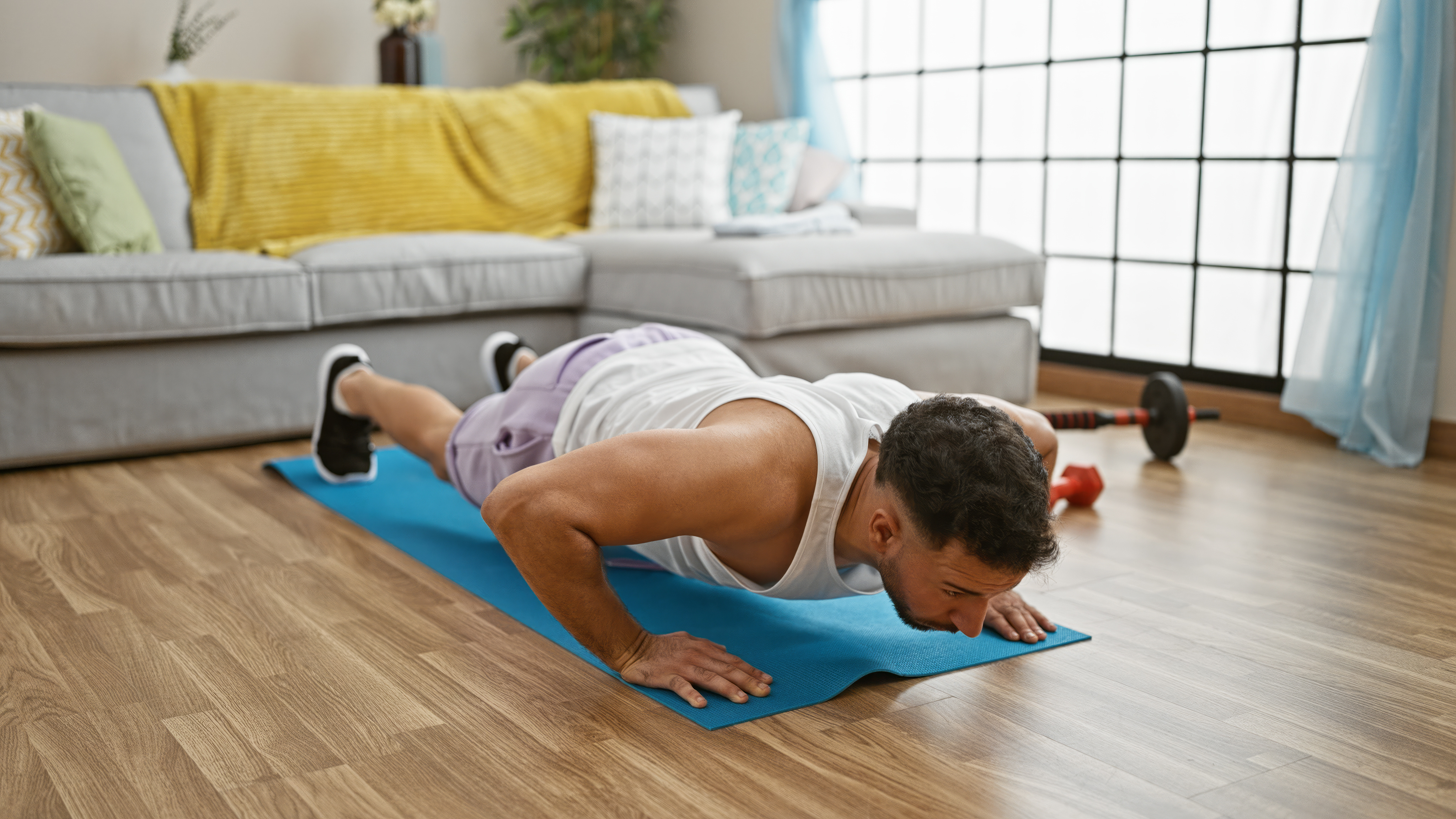Upper Body Workouts, Chest with BodyweightUpdated 6 months ago
How to Stay Active at Home: Upper Body Workouts, Chest with Bodyweight
In this installment of How to Stay Active at Home, we’re homing in on one of the most sought-after muscle groups that most people think they can only enhance in the gym—the chest. Whether aiming for strength, tone, or definition, the bottom line is: you don’t need fancy equipment or a gym membership to get noticeable results. The truth is, by using just your bodyweight and a little floor space (…and maybe a mat for comfort), you can perform the same exercises in a gym setting that effectively target your chest muscles and build your upper body strength.
Why Start with the Chest?
The chest muscles, primarily the pectoralis major and minor, are key for everyday activities and general strength. Your chest muscles control pushing movements, posture, and overall upper body balance, so they are essential to focus on. Strengthening this area can also enhance your physique’s appearance and improve your functional strength.
The Power and Freedom of Bodyweight Training
Not only are bodyweight exercises convenient—they’re also incredibly practical. By manipulating angles, tempo, and repetitions, you can progressively overload your muscles just as you would with weights. That is, you can get the same results from a home workout as you would in the gym with expensive equipment! On top of that, bodyweight workouts simultaneously engage stabilizing muscles more than machine-based movements do, which can lead to better overall strength and coordination.
Examples of Chest-Focused Bodyweight Exercises
Now that you’ve read some of the benefits of bodyweight-based chest exercises, here are some tried-and-true moves that you can incorporate into a home chest workout routine right now:
1. Standard Push-Ups
A classic for a reason. Works the chest, shoulders, triceps, and core.
Form tip: Keep your body in a straight line, lower until your chest nearly touches the floor, and push back up. You may reference an online video for further clarification, but it is reasonably straightforward.
2. Wide Push-Ups
Same thing, but place your hand further apart! A wider hand placement shifts more emphasis to the chest and away from the arm muscles.
Form tip: Place your hands slightly wider than shoulder-width apart and avoid letting your elbows flare out too far. This can put undue strain on your shoulders.
3. Incline Push-Ups
These are great for beginners, warming up, or with high reps, a great workout. Incline push-ups reduce resistance while still targeting the chest. They tend to favor the upper chest muscles.
How: Place your hands on a raised surface like a bench or sturdy table.
4. Decline Push-Ups
The opposite of Incline Push-Ups, these push-ups are a bit tougher. To perform, elevate your feet and place them on a chair or couch to increase difficulty and emphasize the lower chest.
How: Place your feet on a couch or chair and your hands shoulder-width apart on the floor.
5. Archer Push-Ups
Build unilateral (one side at a time) strength by shifting weight from side to side.
Form tip: Lower your body toward one arm while extending the other, then alternate sides.
6. Pseudo Planche Push-Ups
A more advanced movement. This intensely targets the chest and front shoulders by forcing weight forward during a push-up.
Form tip: Lean forward as you push up to increase the load on your chest.
7. Explosive Push-Ups (Clap or Plyometric)
Also advanced, this motion requires you to be able to create space between yourself and the floor once you push up, effectively “jumping” with your arms. These activate fast-twitch fibers and can increase overall power.
Warning: These are more advanced. Please ensure you’re comfortable with and can perform regular push-ups with great form first.
8. Chest Dips (Using the Edge of a Counter or Chair)
If you have two stable surfaces (like chairs or countertops), dips can be done at home, too. Place yourself between the two palmable surfaces, ensure you have enough space to dangle your body, lower your weight until your arms are just about parallel, and then extend.
Form tip: Lean forward slightly to shift the load to your chest.
Sample At-Home Chest Workout:
Perform 3–4 rounds of the following, resting 30–60 seconds between exercises:
- 12 Wide Push-Ups
- 10 Decline Push-Ups
- 8 Archer Push-Ups (each side)
- 10 Pseudo Planche Push-Ups
- 10 Explosive Push-Ups (or Standard if needed)
Finish with a plank (push-up stance, but on your forearms and hold) for 1–2 minutes to engage the core and stabilize the upper body.
Additional Tips to Progress Without Weights
- Slow the motion down: Increase time under tension by slowing the movement.
- Increase reps or sets: Over time, a gradual increase in volume increases muscle growth.
- Elevate or modify angles: Adjust leverage to make movements more difficult.
- Try Holds: Pausing mid-rep builds endurance and increases strength.
The Key: Consistency
The best workout is the one you stick to.
A gym is not a requirement—a little dedication and creativity are all that’s needed to succeed. With a bodyweight-only chest routine, you can develop strength, increase definition, and muscle control right from your living room floor.
Stay tuned for our next post in the How to Stay Active at Home series, where we’ll tackle additional practical upper-body bodyweight training before we move to lower-body!